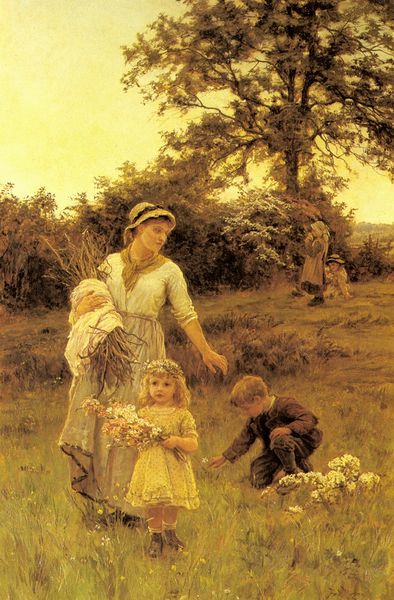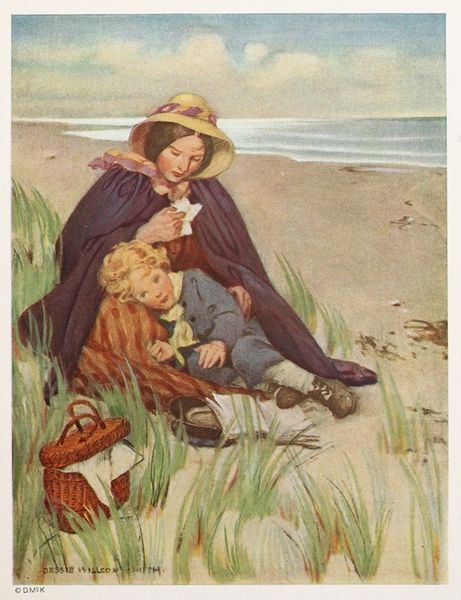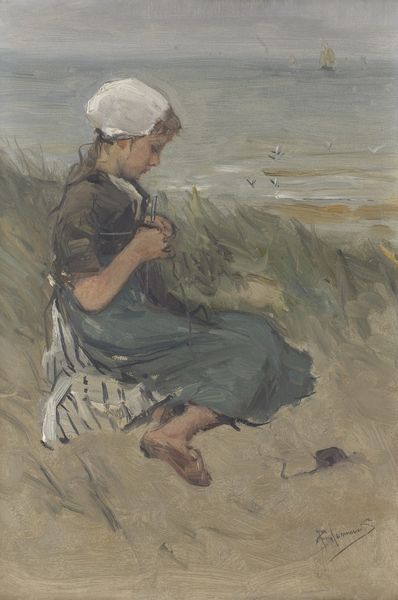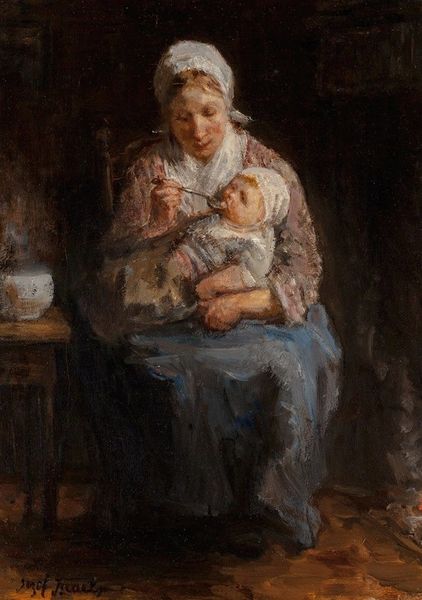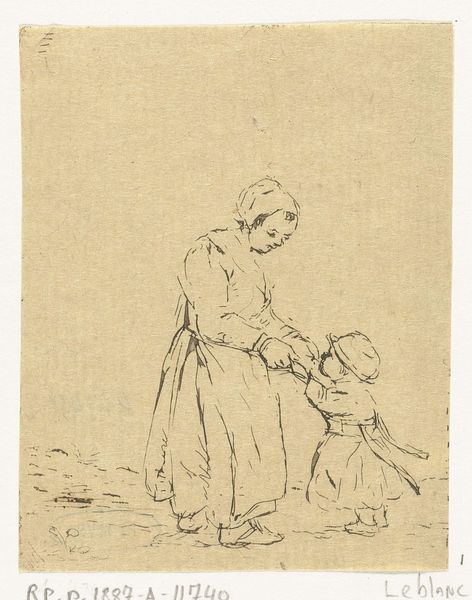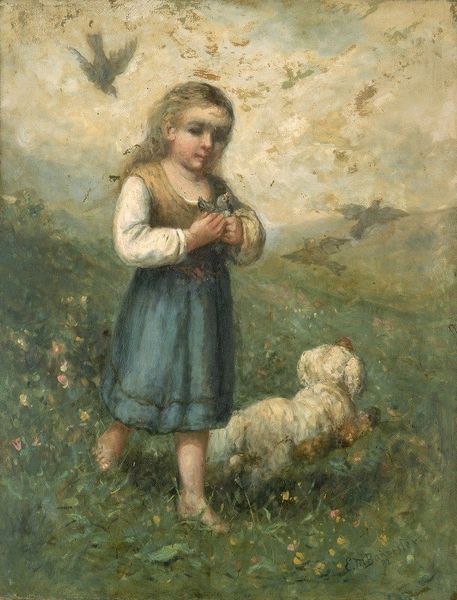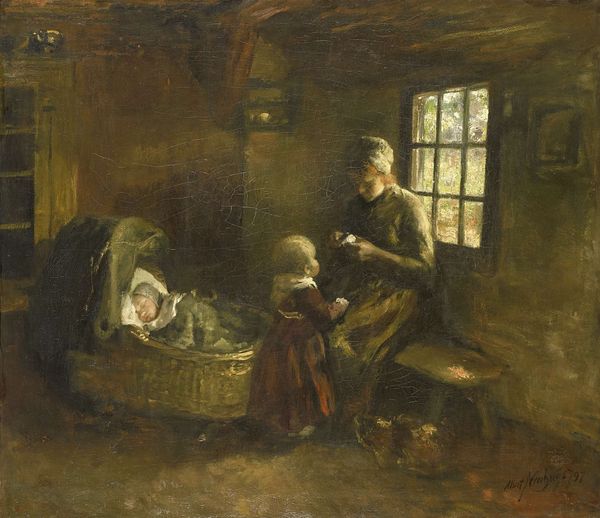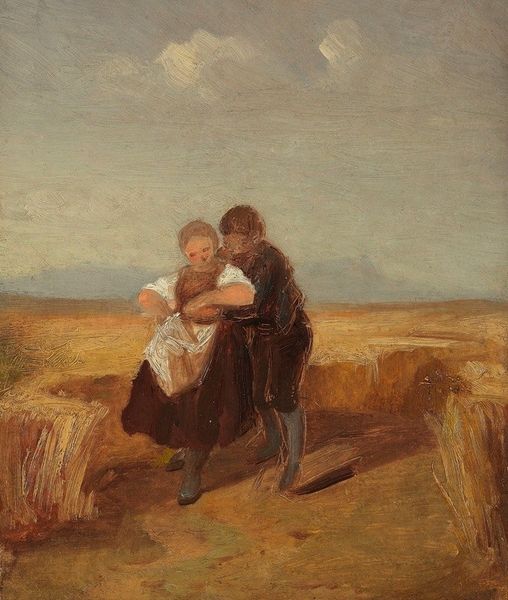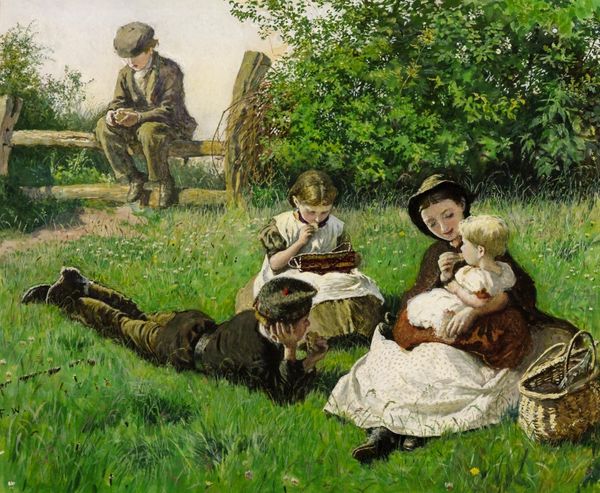
watercolor
#
portrait
#
impressionism
#
landscape
#
figuration
#
watercolor
#
genre-painting
#
watercolor
Dimensions: height 715 mm, width 450 mm
Copyright: Rijks Museum: Open Domain
Editor: So, this watercolor is called "Fisher Girl with Child in a Stroller in the Dunes," painted around 1880 by Bernardus Johannes Blommers. There's such a sense of quiet weariness to it... like a snapshot of a life that's simultaneously peaceful and unrelenting. What do you see in this piece, especially considering its historical context? Curator: It strikes me as a carefully constructed image of labor and domesticity, echoing the sentimental genre paintings popular at the time, while hinting at the realities of working-class women. Notice how the girl's knitting implies the economic demands placed upon her, even in this moment of apparent leisure. Consider, too, the dunes themselves – a liminal space between land and sea, reflecting her in-between status, no longer quite a child, yet burdened with maternal responsibilities. Do you see how her bare feet connect her physically to the earth, while her gaze is downcast and internalized? Editor: It's interesting to think about how that downward gaze might suggest resignation or perhaps even resistance, even if it's subtle. The detail almost romanticizes the difficult lifestyle? Curator: Precisely. And we should question that romanticization. Is this an honest portrayal, or a voyeuristic idealization intended for a middle-class audience? Think about how art has often portrayed working-class subjects. What purpose does it serve and whose narratives are amplified and diminished in these representations? I see echoes of Millet, but with Blommers painting for a market that demanded a certain degree of picturesque sentimentality. Editor: I see what you mean. It reframes the artwork for me to see how we might question how women, especially those from a lower class, were depicted back then. Curator: And that awareness empowers us to view these pieces with more critical, informed eyes. Art gives us insight but also shapes social perspectives. Editor: It's certainly given me something to think about, considering that visual tension. Thank you.
Comments
No comments
Be the first to comment and join the conversation on the ultimate creative platform.

